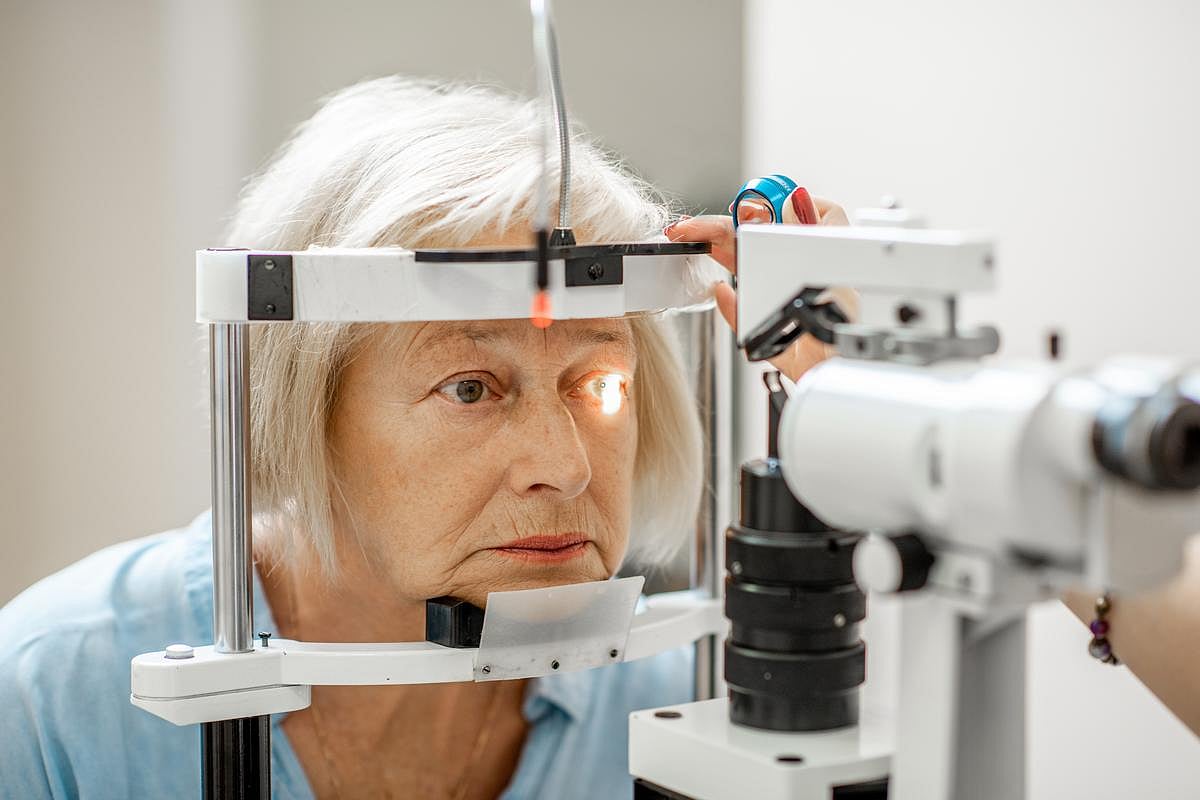If you are having trouble with our mobile app, you must remove and reinstall the app on your device.
Updating the app alone will not fix the issue. Your login will not be impacted. We sincerely apologize for this inconvenience.
Market Pharmacy is now G&G Pharmacy, conveniently located in Marketplace Foods on the corner of Hwy 2 & Broadway!
Same great staff and same great care!
Manténgase sano!

- Posted October 22, 2024
Light Therapy Might Help Ease 'Dry' Form of Macular Degeneration
Light therapy could be a useful treatment for the most common form of age-related macular degeneration, a new study says.
The therapy, called photobiomodulation or “red light” therapy, can reduce the risk of vision loss and slow progression of the “dry” form of macular degeneration, researchers reported recently at the annual meeting of the American Academy of Ophthalmology, in Chicago.
“It’s the first and only noninvasive treatment that appears to be helpful in improving vision and decreasing progression of dry AMD,” said lead investigator Dr. David Boyer, with the Retina-Vitreous Associates Medical Group in Los Angeles.
About 8 out of 10 people with macular degeneration have the “dry” form of the disease. They slowly lose central vision as the macula -- a small but important area in the center of the retina -- becomes thinner and accumulates tiny clumps of protein called drusen.
There are effective drugs available for people with “wet” AMD, in which leaking blood vessels damage the macula, Boyer said.
But people with dry AMD have few options to protect their eyesight, aside from changes to their diet and lifestyle, he said.
Photobiomodulation uses different wavelengths of light to improve function in the cells of the retina, keeping them healthier for longer. It’s a technique already used in eye diseases like diabetic retinopathy, researchers said.
For this study, researchers recruited 100 patients with high-risk dry AMD, and randomly assigned to receive either photobiomodulation or a placebo. Treatment was administered three times a week for three weeks, repeated every four months.
After two years, 53% of patients receiving light therapy had significant improvement in their vision as measured by an eye chart. By comparison, 18% of patients in the placebo group had a significant decline in their eye chart test results.
The light therapy patients also had a 73% reduction in their progression toward geographic atrophy, the last stage of AMD, while untreated patients had a 24% increase in disease progression, results show.
“It’s promising news for patients who typically experience slow, progressive vision loss year after year,” Boyer said in a meeting news release.
The U.S. Food and Drug Administration is expected to decide in December whether to approve photobiomodulation for treatment of dry AMD, researchers said.
Findings published at medical meetings should be considered preliminary until published in a peer-reviewed journal.
More information
The University of Colorado has more about photobiomodulation.
SOURCE: American Academy of Ophthalmology, news release, Oct. 18, 2024






